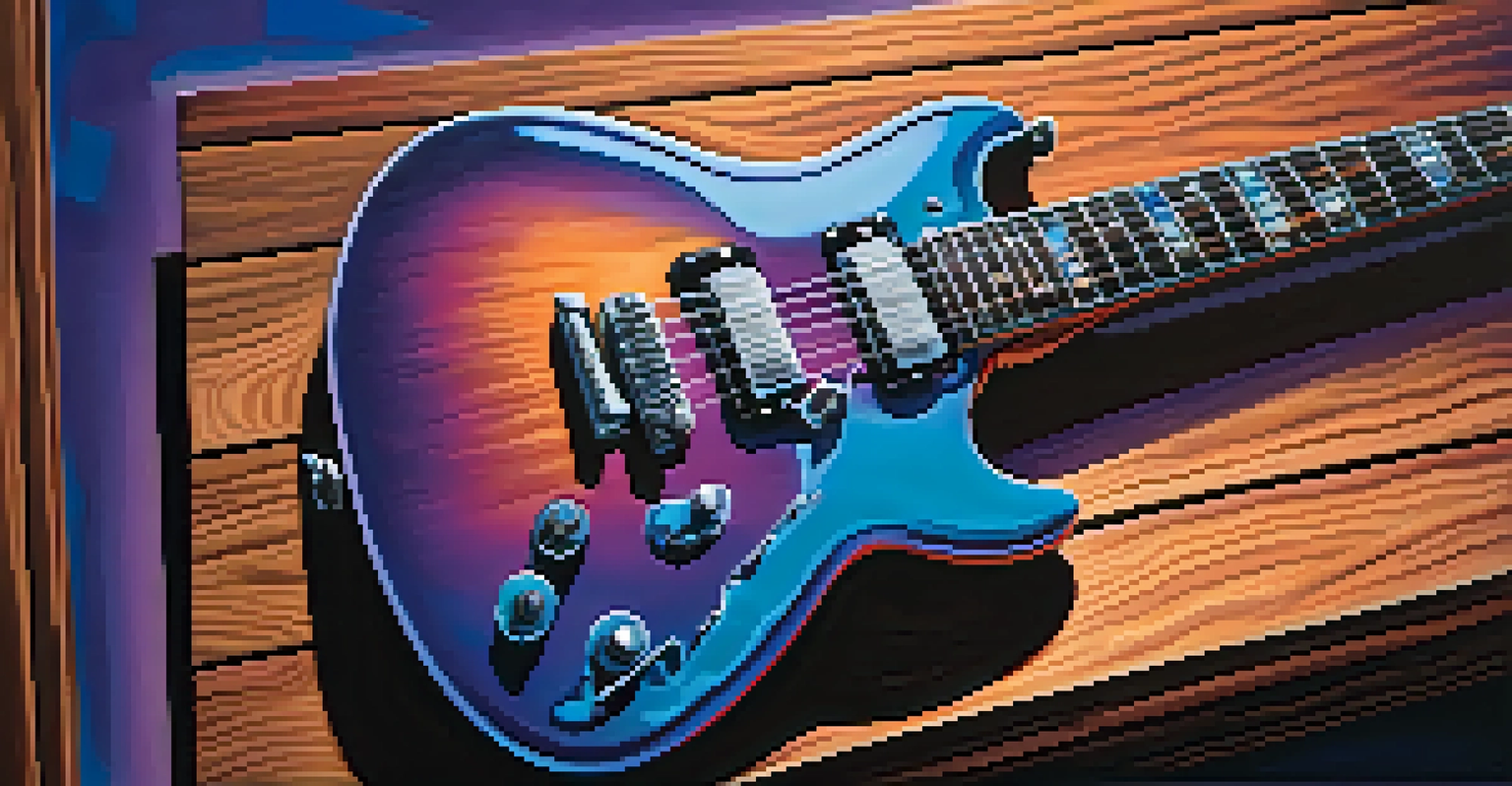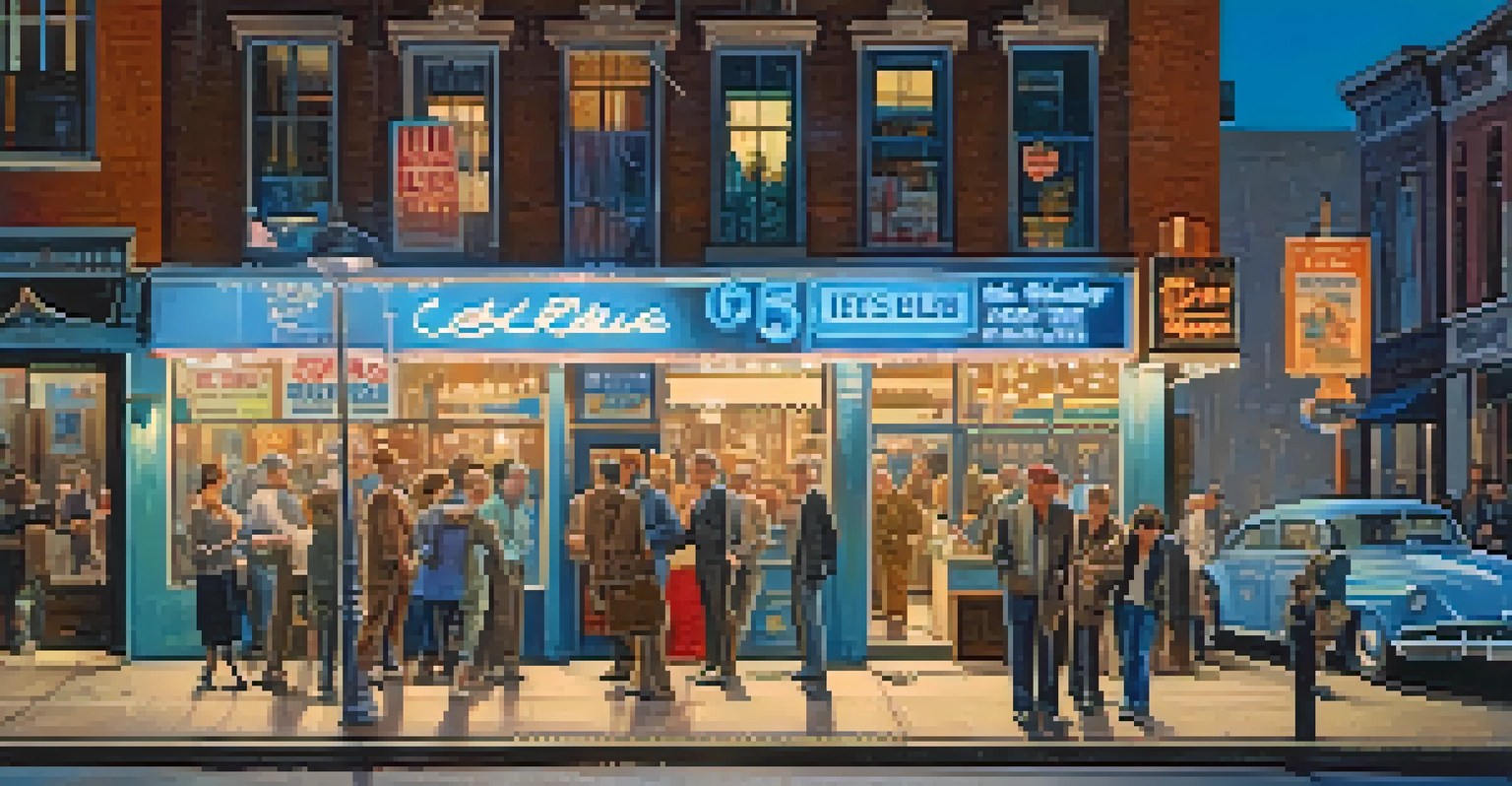The Blues: African American Roots and Guitar Evolution

Understanding the Origins of the Blues
The Blues emerged in the late 19th century, rooted in the African American experience. It was born from a blend of African musical traditions, spirituals, and folk songs, expressing the struggles and joys of everyday life. This genre served as a form of storytelling, illuminating the hardships faced by African Americans, particularly in the South.
The blues is a tonic for whatever ails you.
As these early musicians gathered to share their songs, the raw emotion and rhythm they created resonated deeply with audiences. The use of call-and-response patterns was particularly significant, reflecting African cultural influences. These musical exchanges laid the foundation for what would become a vital genre in American music history.
In essence, the Blues was more than just music; it was a means of communication that transcended words. Each note played and every lyric sung held the weight of personal and collective experiences. This connection to heritage and expression remains at the heart of the Blues today.
The Influence of African American Culture on the Blues
African American culture profoundly shaped the Blues, drawing from rich traditions and communal practices. Festivals, gatherings, and social events often featured music that blended various influences, from African rhythms to European melodies. This cultural exchange is what made the Blues a unique and powerful genre.

In the face of oppression, music became a source of strength and resilience. The Blues articulated the pain of racial injustice while also celebrating community and hope. Through this lens, the genre became a vessel for expressing the complexities of African American life in a segregated society.
Blues Originates from African Roots
The Blues emerged from the African American experience, blending African musical traditions with spirituals and folk songs to express life's struggles and joys.
Artists like B.B. King and Muddy Waters exemplify how Blues musicians intertwined personal narratives with broader cultural themes. Their stories resonate not only with African American experiences but also with universal human emotions, making the Blues relatable to diverse audiences.
The Role of the Guitar in Shaping the Blues Sound
The guitar has always been central to the Blues sound, evolving from acoustic roots to electric prominence. Early musicians often relied on simple acoustic guitars, using fingerpicking techniques to create rhythmic patterns that drove their songs. This laid the groundwork for the distinctive sound that defines the genre.
Music can change the world because it can change people.
As the Blues spread and evolved, the electric guitar emerged as a game-changer. Artists like Chuck Berry and Jimi Hendrix revolutionized the way the guitar was played, introducing new techniques and styles that captivated audiences. The electric guitar allowed for greater expression and complexity, pushing the boundaries of the genre.
Today, the guitar remains a symbol of the Blues, representing both tradition and innovation. Whether played with a slide or a pick, it continues to convey the raw emotion that the genre is known for. The instrument's evolution mirrors the growth of the Blues itself, showcasing its adaptability and enduring appeal.
Key Elements and Characteristics of the Blues
At its core, the Blues is defined by specific musical elements that set it apart from other genres. The 12-bar blues structure is one of the most recognizable formats, providing a simple yet effective framework for improvisation. This structure allows artists to express themselves freely, creating a dialogue between musicians.
Another hallmark of the Blues is its use of blue notes, which are notes sung or played at a slightly lower pitch for expressive purposes. This adds a unique emotional depth to the music, allowing artists to convey feelings of sorrow, longing, and passion. These characteristics contribute to the genre’s distinctive sound.
Guitar Shapes Blues Sound
The guitar, evolving from acoustic to electric, has been central to the Blues, enabling greater emotional expression and complexity in the genre.
Lyrically, the Blues often employs themes of heartache, struggle, and resilience. This combination of musical structure and emotional storytelling creates a powerful listening experience. It’s a genre that resonates deeply, allowing listeners to connect with the feelings and stories of the artists.
Prominent Blues Artists and Their Impact
Throughout history, numerous artists have shaped the landscape of the Blues, each bringing their unique style and voice. Legends such as Robert Johnson and Howlin' Wolf laid the groundwork for future generations, influencing countless musicians across genres. Their contributions helped to popularize the Blues and elevate its status in the music industry.
In the 1960s, the British Invasion introduced the Blues to a broader audience, with bands like The Rolling Stones and The Yardbirds paying homage to its roots. This cross-pollination not only revitalized the genre but also showcased its versatility and relevance in popular music. The Blues became a cornerstone for rock and roll, demonstrating its enduring influence.
Today, contemporary artists continue to push the boundaries of the Blues, blending it with various genres like rock, jazz, and hip-hop. Musicians such as Gary Clark Jr. and Joe Bonamassa are examples of how the Blues evolves while honoring its rich heritage. Their work keeps the spirit of the Blues alive, inspiring new generations of musicians and fans.
The Blues: A Vehicle for Social Change
Beyond its musical significance, the Blues has served as a powerful vehicle for social change. Many artists have used their platform to address issues such as racial inequality, poverty, and injustice. Through their lyrics, they have brought attention to the struggles faced by African Americans, fostering awareness and dialogue.
The Blues became a rallying cry during the Civil Rights Movement, with songs like 'We Shall Overcome' resonating deeply with those fighting for equality. These anthems provided hope and solidarity, illustrating how music can inspire action and bring communities together. The genre’s connection to social issues remains relevant today.
Blues as a Tool for Social Change
Throughout history, the Blues has served as a powerful vehicle for social change, addressing issues like racial inequality and injustice through its lyrics.
In modern times, artists continue to use the Blues as a medium for activism. By addressing contemporary challenges through their music, they ensure that the genre remains a powerful force for change. The Blues serves not only as entertainment but also as a catalyst for awareness and progress.
The Future of the Blues: Keeping the Legacy Alive
As the Blues continues to evolve, its future looks bright thanks to a new generation of musicians. Young artists are exploring innovative sounds while respecting the genre's roots, ensuring that the essence of the Blues remains intact. This blend of tradition and modernity keeps the genre fresh and appealing to diverse audiences.
Music festivals and educational programs play a crucial role in preserving the Blues legacy. Events like the Chicago Blues Festival celebrate the genre's history while showcasing emerging talent. These initiatives foster appreciation for the Blues and encourage young musicians to explore its rich heritage.

Ultimately, the future of the Blues lies in its ability to adapt and resonate with contemporary issues. By continuing to tell stories that reflect the human experience, the Blues will maintain its relevance and emotional power. As long as there are stories to tell, the Blues will endure, thriving in the hearts of musicians and listeners alike.